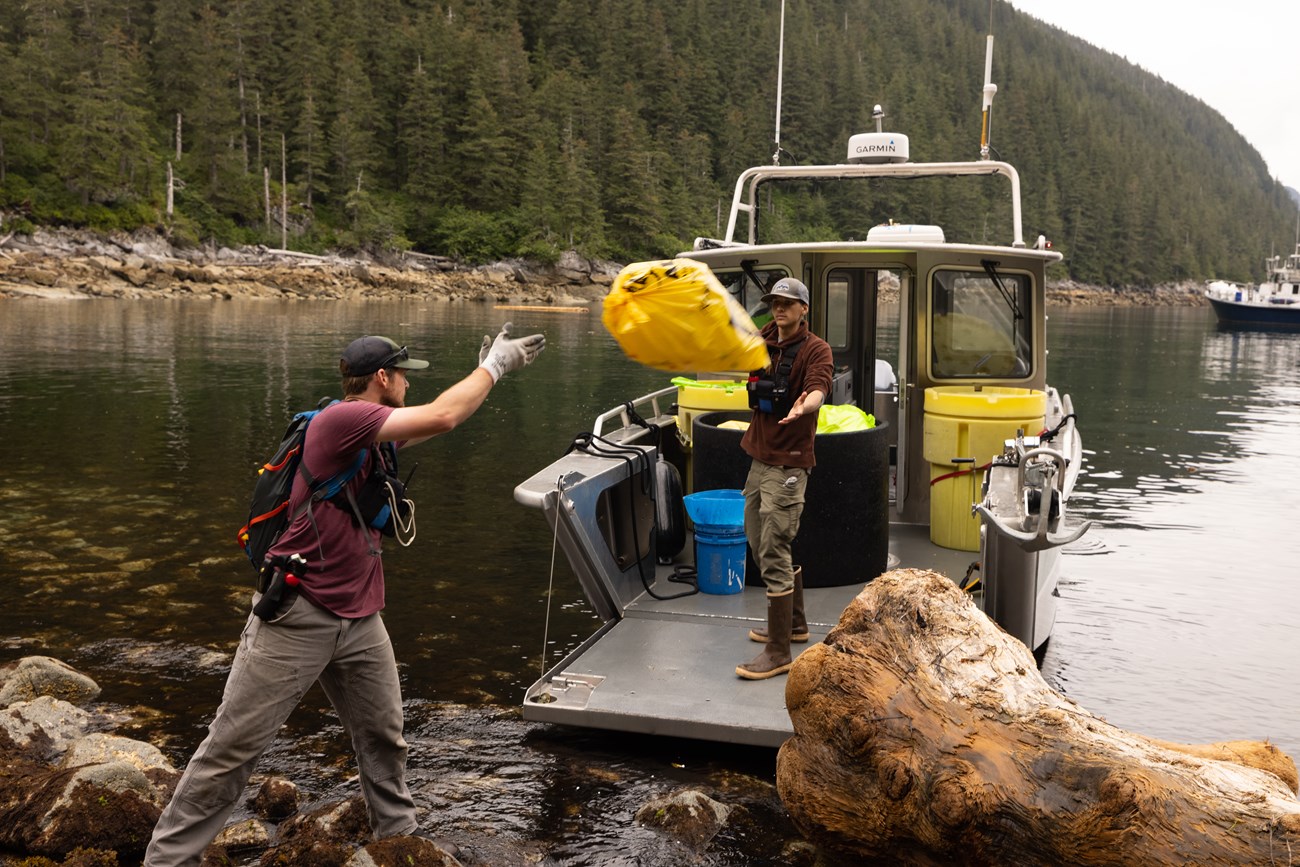Last updated: December 29, 2021
Article
Tackling marine debris in Kenai Fjords National Park

It probably doesn’t—but should it?
Up to 20 million tons of plastic end up in the world’s ocean each year. Plastic, and other man-made materials intentionally or accidentally discarded in the ocean is called marine debris. Ocean currents, vessel traffic, and storm surges can transport marine debris hundreds of miles from its source and wash it ashore on even the most remote coastlines and in our national parks.
Marine debris is harmful to marine mammals and seabirds that ingest, become entangled in, or are even strangled by it. It can transport invasive marine organisms that cause ecological and economic harm. And marine debris is just plain unsightly—it can detract from the wilderness experience that thousands of visitors seek in Alaska’s coastal parks each year.

In July 2021, Kenai Fjords partnered with the Ocean Alaska Science and Learning Center and two neighboring landowners—Port Graham Corporation and the Alaska Maritime National Wildlife Refuge (NWR)—to clean trash from catcher beaches in and around Kenai Fjords. Over the course of a week, a crew of six moved methodically through sandy beaches, grassy bays, and driftwood jams. Trash bags in hand, they gathered plastic buckets and bottles, metal and glass vessels, buoys, rope, netting, and foam. A hidden waterfall, lone black bear, and prolific beds of giant kelp they encountered along the way reminded them of the importance of their labor.
All told, the team removed nearly 4,000 pounds of debris from six beaches in Kenai Fjords and neighboring Port Graham Corporation and Alaska Maritime NWR lands. Their collaborative effort builds on a 10+ year legacy of coastal cleanups in the park and lays the foundation for coastal stewardship for many years to come.

Want to help turn the tide on marine debris?
Opt for reusable containers and utensils over single-use plastics. Participate in a cleanup on your local beach, lake, or river (or organize your own!). Spread the word to your friends and family—so they, too, can be part of the solution. We all live in a watershed, and collectively we can help protect water and the associated landscape.
Interested in joining or starting a coastal cleanup in your community? Check out the International Coastal Cleanup project.
Alix Pfennigwerth is a biologist and science communicator with the National Park Service.
